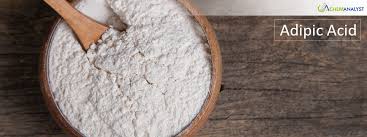Welcome To ChemAnalyst

In early February 2025, global adipic acid markets exhibited divergent regional trends, reflecting localized supply-demand dynamics and cost pressures. While China recorded a price increase driven by post-holiday demand recovery and rising feedstock costs, Germany saw a marginal decline amid stable supply and subdued procurement activity. These contrasting movements underscore the varying macroeconomic and industrial landscapes influencing the adipic acid sector, with regional factors shaping short-term pricing trajectories.
In China, the adipic acid market witnessed a 2.4% price increase driven by a post-New Year's Day resurgence in demand and rising production costs, particularly for cyclohexanone. Downstream industries, anticipating further price hikes, engaged in proactive "buy up" behaviour, contributing to a temporary supply tightening. While supply remained stable with consistent operating rates at adipic acid plants, the elevated feedstock costs prompted traders to adjust their pricing strategies. Despite the holiday period impacting order negotiations, manufacturers' resistance to lower prices pushed the market's price centre upward, with low-priced sources gradually disappearing.
Conversely, Germany's adipic acid market experienced a marginal 0.4% price decrease due to steady supply and subdued demand. Robust supply conditions prevailed as manufacturers maintained consistent production levels, effectively managing feedstock cost pressures, despite a slight upward trend in benzene prices. While minor delivery delays occurred due to increased purchasing activity, the supply chain demonstrated resilience, maintaining adequate inventory levels. Demand for Adipic Acid in Germany has softened, primarily due to cautious procurement practices among key buyers. Following significant destocking at the end of the previous year, market participants have maintained sufficient inventory levels, which has lessened the urgency for fresh orders. The German Federal Motor Vehicle Office (KBA) reported a 2.8% decrease in new passenger car registrations in January 2024 compared to the previous year, totalling 207,640 units. This decline reflects ongoing economic challenges, leading consumers to defer major investments and dampening Adipic Acid demand in the automotive market.
Looking ahead, the contrasting trends in China and Germany suggest a complex market outlook. While China's market appears poised for continued upward pressure due to sustained demand and cost factors, Germany's market may see a rebound in demand as business expectations improve. Optimism surrounding potential interest rate cuts and an economic upturn following upcoming elections could stimulate increased purchasing activity in Germany. Globally, the adipic acid market will likely be influenced by fluctuations in raw material prices, particularly cyclohexanone and benzene, as well as the overall health of key downstream industries like automotive and plastics. Monitoring these factors will be crucial for anticipating future price movements of Adipic Acid and making informed business decisions.
We use cookies to deliver the best possible experience on our website. To learn more, visit our Privacy Policy. By continuing to use this site or by closing this box, you consent to our use of cookies. More info.
